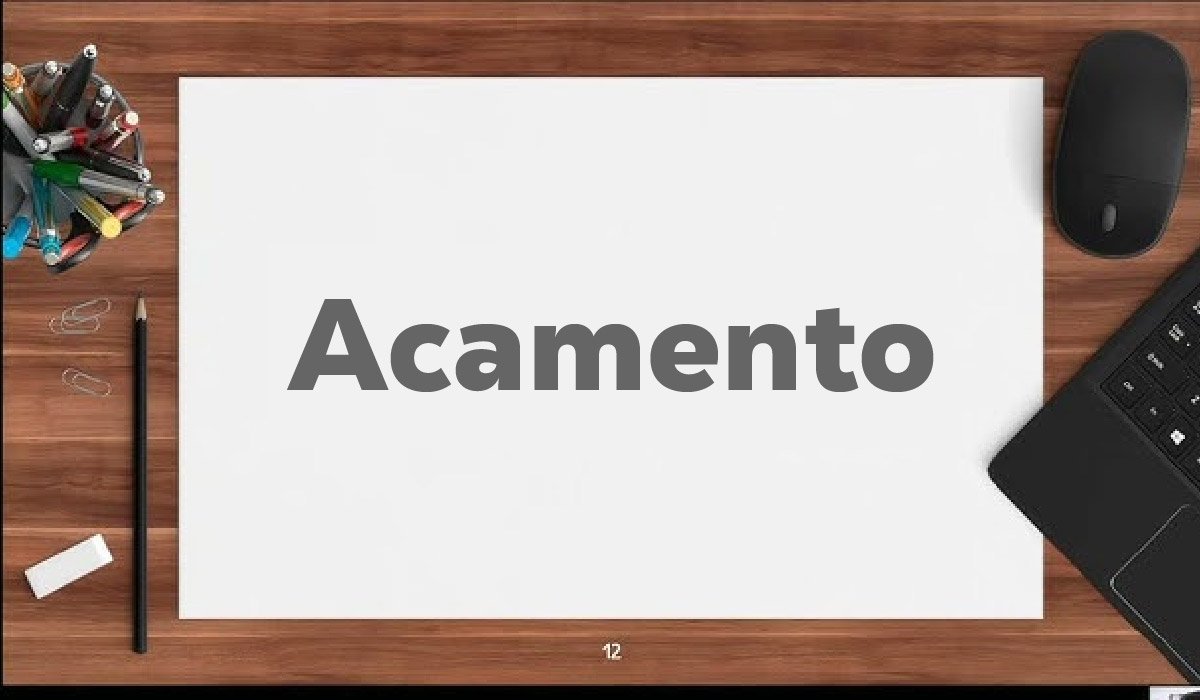Blog
Acamento: The Powerful Final Touch That Transforms Everything

Introduction
In today’s fast-changing world of design, construction, fashion, and product innovation, new words often appear that capture attention and spark curiosity. One such word that has been appearing more frequently on blogs, social media, and digital spaces is acamento. At first glance, it seems unfamiliar, but it carries a strong link to the Portuguese word acabamento, which translates to finishing or the act of applying the final touches that complete a product, structure, or creation.
People are searching for this keyword because it reflects something deeper than a simple trend—it expresses the universal human desire for completeness, polish, and refinement. Whether it is a newly painted wall, a perfectly stitched dress, or the final polish applied to a wooden table, acamento represents the transformation from ordinary to extraordinary. This article explores the meaning of acamento, its origins, its applications across industries, the types of finishes it includes, the benefits it provides, common mistakes to avoid, and the trends shaping its future.
What is Acamento?
Acamento is best understood as the process or concept of applying the final touches to an object, structure, or design so that it is complete, functional, and aesthetically pleasing. While the Portuguese root word acabamento literally means finishing, acamento has developed as a flexible interpretation, often used in digital content and discussions to describe the polish that makes things stand out.
Think of a house before painting—it may be structurally sound, but without aca mento, the bare walls feel incomplete. Similarly, clothing may be stitched together, but until zippers, buttons, or decorative patterns are added, it lacks the spark that makes it truly wearable. Even in technology, a phone casing with a brushed texture or matte finish represents acamento. In short, acamento is the finishing touch that makes an object look, feel, and perform as intended, bridging the gap between raw construction and final presentation.
The Origins of the Word Acamento
The word acamento traces its roots to the Portuguese language, where acabamento refers to finishing or finalizing something. In industries like architecture, furniture, or textiles, acabamento is a highly technical stage that ensures durability and beauty. The adapted form “aca mento” has recently appeared in blogs and digital platforms as a simplified or stylistic version, making it easier for international audiences to engage with the concept. In English-speaking contexts, acamento is often interpreted as “the final polish,” a phrase that resonates with people because it connects to everyday experiences of adding details that matter.
The difference between acabamento and acamento lies mainly in usage: the former is the formal term used in Portuguese-speaking countries, while the latter has become a trending term in English SEO culture. Despite this difference, the essence remains the same—it refers to the process of refinement and closure that transforms an unfinished product into something complete and desirable.
Why Acamento is Important
The importance of acamento cannot be overstated, because it influences how people perceive and use objects in daily life. From an aesthetic perspective, aca mento makes things look beautiful and appealing by improving surfaces, textures, and colors. From a durability and protection standpoint, finishing treatments shield materials from wear, moisture, corrosion, or fading, ensuring that they last longer.
Beyond functionality, aca mento also enhances the user experience—products with smooth edges, polished surfaces, or protective finishes feel more premium and easier to interact with. Finally, acamento carries emotional value, as the finishing touches often evoke satisfaction and pride. A freshly polished wooden table, a newly tiled bathroom wall, or a coat of paint on an old chair can transform ordinary items into something extraordinary, reminding us that the smallest details can bring the most joy.
Types of Acamento Finishes
Acamento by Look
Different finishes create different visual effects, and this variety is what makes aca mento so powerful in design. A matte finish offers a soft, non-reflective look that feels subtle and modern. A glossy finish, by contrast, reflects light and creates a striking, polished effect that feels luxurious. The satin finish balances both extremes, providing a semi-gloss appearance that is versatile in homes and offices. A textured finish adds grip and uniqueness, making surfaces both functional and visually interesting. Meanwhile, a brushed finish creates linear patterns that enhance metals or plastics with a sleek, industrial aesthetic.
Acamento by Material
Each material responds differently to aca mento techniques. Wood finishes often involve varnish, oils, or lacquer, making furniture durable and shiny. Metal finishes like anodizing, powder coating, or polishing not only improve appearance but also protect against rust and corrosion. Ceramics and glass finishes use glazing and special coatings to enhance color and resistance. Textiles and fashion finishes include stitching, embroidery, and coatings that add beauty and durability to clothes. Plastic and composite finishes involve UV protection, texturing, or soft-touch coatings, making them more user-friendly and visually appealing.
| Finish Type | Best Use | Advantages | Limitations |
|---|---|---|---|
| Matte | Walls, furniture | Soft look, hides imperfections | Can stain more easily |
| Glossy | Automotive, electronics | Shiny, premium, easy to clean | Shows fingerprints |
| Satin | Interiors, furniture | Balanced, versatile | Moderate durability |
| Textured | Outdoor surfaces, plastics | Grip, uniqueness | Harder to clean |
| Brushed | Metals, appliances | Sleek, modern look | Can scratch over time |
Applications of Acamento in Real Life
Architecture & Construction
In buildings, aca mento represents the final stage where walls are painted, tiles are installed, trims are added, and decorative finishes are applied. It transforms concrete and bricks into inviting spaces.
Furniture & Interior Design
For furniture, acamento includes sanding, polishing, and applying protective finishes that make tables smooth and chairs comfortable. In interior design, it ensures every room feels complete with cohesive finishes.
Fashion & Clothing
In clothing, acamento appears in the form of neat stitching, buttons, zippers, beads, or embroidery that elevate simple fabrics into stylish garments.
Automotive & Electronics
Automobiles rely heavily on aca mento, from glossy car paint that shines on the road to dashboard textures that feel premium. In electronics, smartphone casings and laptop surfaces gain their identity through polished or matte finishes.
Art & Crafts
Artists apply varnish, glaze, or resin coatings to paintings, sculptures, and handmade crafts. These final touches protect the work and enhance its visual impact.
Step-by-Step Process of Acamento
-
Surface preparation – cleaning, sanding, or priming ensures a smooth base.
-
Applying base layers – early coats or underlayers set the foundation.
-
Finishing coat or detailing – this is the visible aca mento stage.
-
Curing or drying – proper drying ensures durability.
-
Quality testing – inspecting gloss, texture, or adhesion confirms success.
-
Maintenance – protecting and cleaning finishes keeps them looking fresh.
Benefits of Acamento
The benefits of acamento extend across every sector. It makes products last longer by protecting them against external forces. It enhances beauty and style, making them more desirable in competitive markets. Aca mento increases value, as well-finished products often command higher prices and resale potential. Finally, it boosts customer satisfaction, as people naturally appreciate quality and attention to detail in the items they use.
Common Mistakes in Acamento
Despite its importance, acamento is often mishandled. Skipping surface preparation leads to uneven finishes that peel or chip. Using incompatible finishes can cause adhesion failures or discoloration. Rushing the drying or curing process often results in weaker finishes that do not last. Over-finishing can also be a problem, as excessively glossy or layered finishes may look unnatural and reduce authenticity. Avoiding these mistakes ensures the final outcome matches the effort invested.
Latest Trends in Acamento
Modern industries are reimagining acamento with innovation. Eco-friendly finishes such as low-VOC paints and bio-based coatings are replacing toxic chemicals, aligning with sustainability goals. Smart finishes with anti-fingerprint, self-healing, and antibacterial properties are gaining popularity in electronics and healthcare. 3D-printed textures allow designers to create intricate, customized surfaces. Even in digital design, aca mento appears metaphorically through polished interfaces and micro-animations that make apps and websites feel complete.
Acamento Across Industries
| Industry | Example of Acamento | Impact |
|---|---|---|
| Architecture | Paint, tiles, cladding | Aesthetics + protection |
| Furniture | Polished wood, fabrics | Comfort + beauty |
| Fashion | Embroidery, buttons | Style + uniqueness |
| Automotive | Car coating, dashboard | Durability + premium look |
| Electronics | Smartphone casing finishes | User experience + durability |
Psychological & Cultural Importance
On a deeper level, acamento connects with human psychology and culture. People crave closure, and finishing something provides satisfaction. In many traditions, final touches symbolize achievement, completion, and pride. Whether in art, architecture, or daily routines, aca mento reflects craftsmanship, care, and the value of doing things thoroughly.
Future of Acamento
Looking ahead, acamento is expected to evolve with sustainable and technological innovations. Eco-friendly finishes will dominate as industries reduce environmental impact. Advanced technology will create smart, interactive, and more durable finishes. Hybrid materials will combine aesthetics with function. Aca mento may also grow as a design philosophy—reminding us that perfection lies not only in creation but in the refinement that makes every detail shine.
Conclusion
In conclusion, acamento is much more than a trendy word—it is the essence of the finishing touch that transforms raw work into something valuable, durable, and beautiful. Rooted in the Portuguese concept of acabamento, acamento has expanded into a broader idea that influences architecture, fashion, furniture, art, and even digital design. By understanding its meaning, types, applications, and importance, we see that aca mento is not an afterthought but the defining step that determines quality. Embracing aca mento in projects, crafts, and industries ensures that everything we create not only functions well but also looks and feels complete, reminding us that excellence lives in the details.
FAQs About Acamento
What is Acamento?
Acamento means the final touch or finishing step that makes something complete. It comes from the Portuguese word acabamento and describes how paint, polish, stitching, or coatings are added at the end to make houses, clothes, furniture, or products look and work better.
How is Acamento Different from Acabamento?
Both words talk about finishing, but acabamento is the original Portuguese term used in industries, while “acamento” is a newer or simplified version now used in blogs and English content. The meaning stays the same – giving something its final polish.
Where Can You See Acamento in Real Life?
You can see acamento everywhere: the paint on your home’s walls, the polished surface of a wooden table, the buttons on a shirt, the glossy paint on a car, or the smooth casing of a smartphone. All these are finishing touches added at the last stage.
Why is Acamento Important?
Acamento is important because it makes things look better, last longer, and feel nicer to use. It protects materials from damage and adds style, value, and quality to homes, clothes, furniture, cars, and electronics.
What Are the New Trends in Aca mento?
New trends in aca mento include eco-friendly finishes with low chemicals, smart coatings that resist fingerprints or heal small scratches, and 3D-printed textures that give products unique designs. These modern finishes make items more sustainable, durable, and attractive.
For More Information Visit Coopermagazine
-

 Celebrity1 year ago
Celebrity1 year agoWho Is Jennifer Rauchet?: All You Need To Know About Pete Hegseth’s Wife
-

 Celebrity1 year ago
Celebrity1 year agoWho Is Mindy Jennings?: All You Need To Know About Ken Jennings Wife
-

 Celebrity1 year ago
Celebrity1 year agoWho Is Enrica Cenzatti?: The Untold Story of Andrea Bocelli’s Ex-Wife
-

 Celebrity1 year ago
Celebrity1 year agoWho Is Klarissa Munz: The Untold Story of Freddie Highmore’s Wife
















